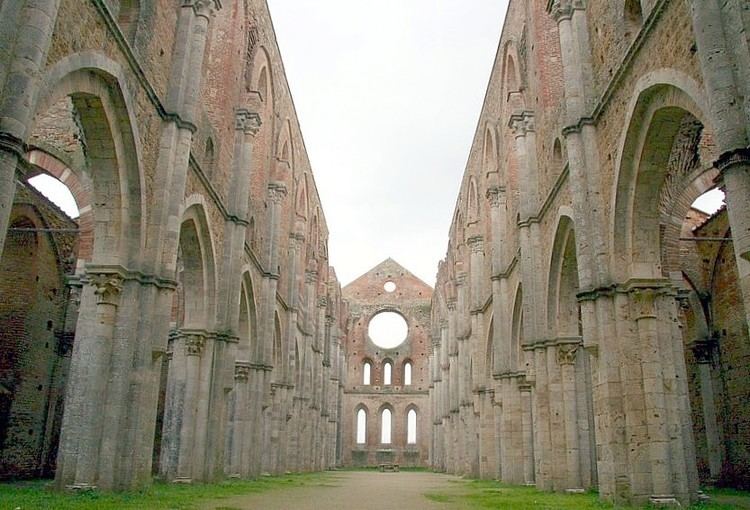Phone +39 0577 756738 | Groundbreaking 1218 | |
 | ||
Hours Open today · 9AM–5:30PMTuesday9AM–5:30PMWednesday9AM–5:30PMThursday9AM–5:30PMFriday9AM–5:30PMSaturday9AM–5:30PMSunday9AM–5:30PMMonday9AM–5:30PM Similar Cappella di San Galgano, Abbey of Sant'Antimo, Territorial Abbey of Monte Oli, Val d'Orcia, Terme di Petriolo | ||
The hermitage of montesiepi and the abbey of san galgano in tuscany italy
The Abbey of Saint Galgano was a Cistercian Monastery found in the valley of the river Merse between the towns of Chiusdino and Monticiano, in the province of Siena, region of Tuscany, Italy. Presently, the roofless walls of the Gothic style 13th-century Abbey church still stand. Nearby are the chapel or Eremo or Rotonda di Montesiepi (1185), the tomb of Saint Galgano and the purported site of his death in 1181, the sword said to have been planted in the ground by Galgano and a chapel with frescoes by Ambrogio Lorenzetti.
Contents
- The hermitage of montesiepi and the abbey of san galgano in tuscany italy
- Abbey of san galgano tuscany
- History
- Popular culture
- References
Abbey of san galgano tuscany
History
The abbey formed around the site of the former hermitage of Galgano Guidotti (San Galgano), and construction of the church began around 1220, and was completed some six decades later. The abbey grew in wealth and became allied with the Republic of Siena. Monks from the abbey routinely served as Camarlinghi di Biccherna.
However within a century, the republic failed to protect it from roving condottieri, and John Hawkwood and his men despoiled the monastery beginning in 1363. By the end of the 14th-century, only the abbot remained in the monastery.
The impoverished and decaying abbey sputtered along for nearly four centuries. In 1786, the campanile fell, taking with it the roof of the church. The ruins were looted for building material. Some restorations occurred in the 19th and 20th; but the church remains only a magnificent shell among the wooded valley. The long tall nave with flechet windows and an apse rose window still stand. The abbey's chapter house and part of the scriptorium also remain.
The Rotonda chapel was restored in 1924 and retains its peculiar medieval shape, recalling imperfectly earlier Ancient Roman mausoleums.
Popular culture
The abbey was the location where parts of Andrei Tarkovsky's 1983 film Nostalghia were shot.
